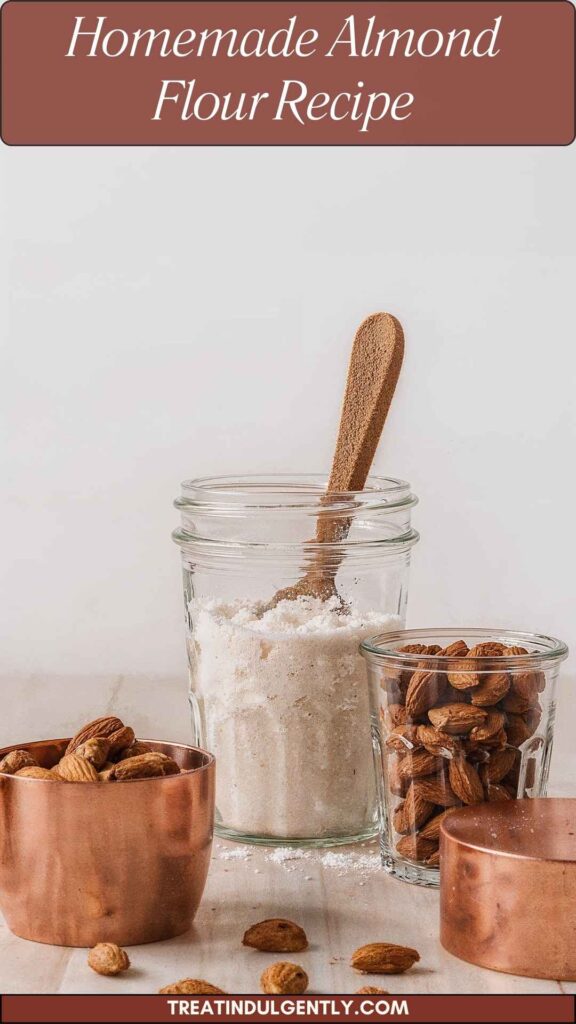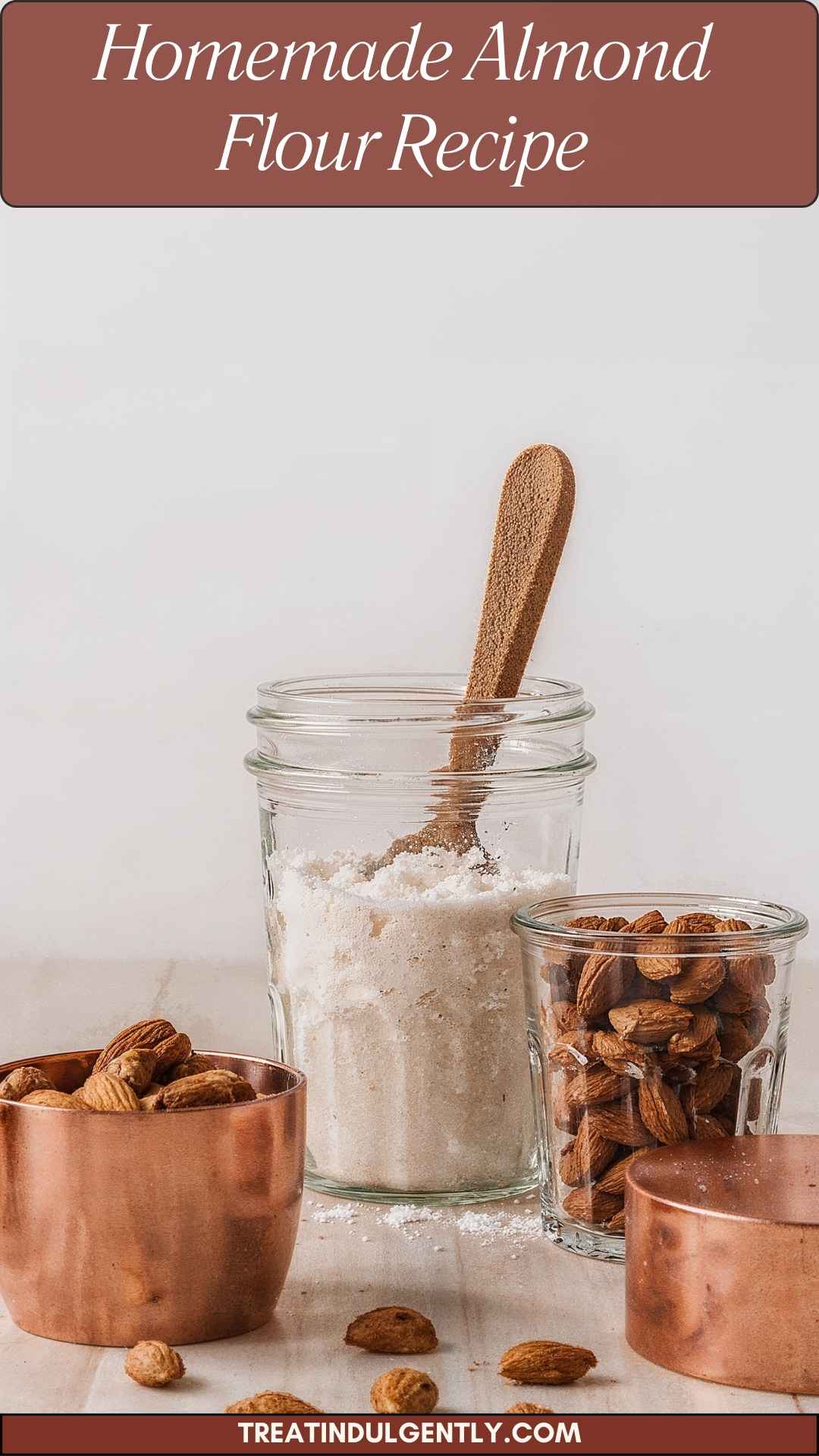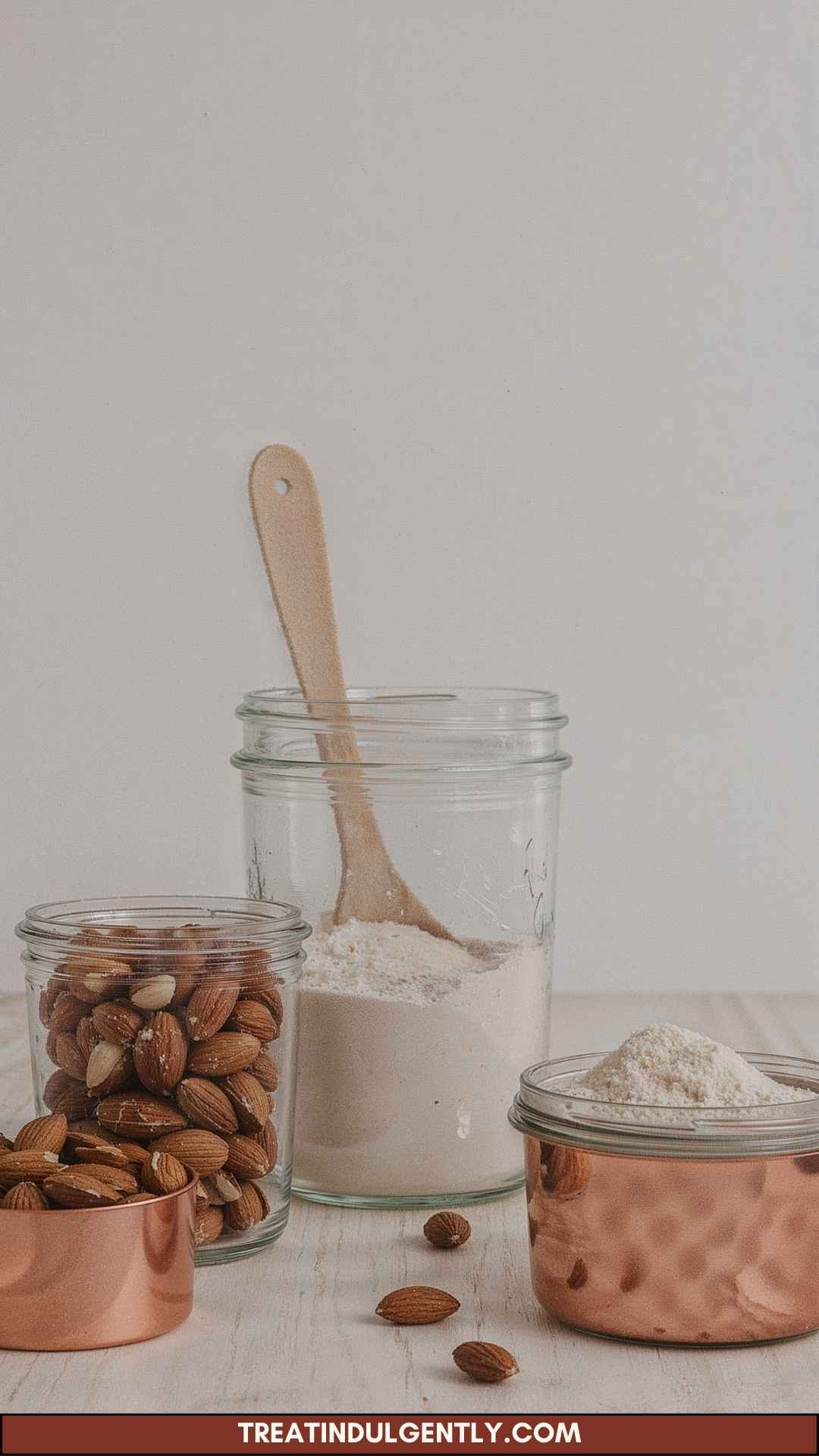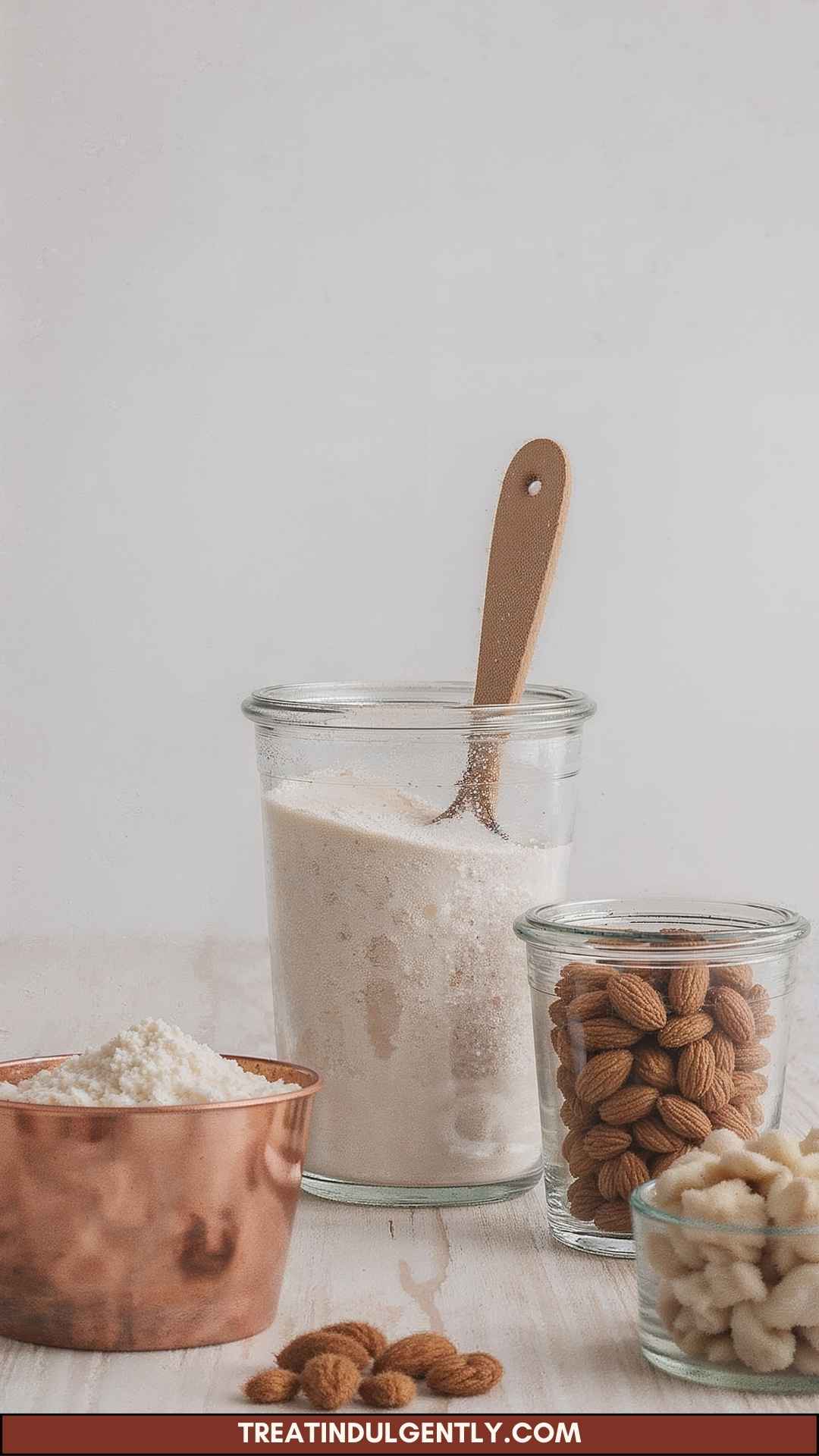Before we dive into the recipe, let's chat about what you can do with almond flour. It’s not just for gluten-free baking; this flour is incredibly versatile. Picture this: almond pancakes for breakfast, fluffy almond flour muffins as a snack, or an almond crust for savory quiches.
You can even use it as a thickening agent for soups or sauces. It pairs beautifully with everything from chocolate to spices, making it an excellent choice for a wide range of dishes.
What is Homemade Almond Flour?
Homemade almond flour is simply finely ground almonds. It’s a delightful alternative to regular flour, perfect for those on a gluten-free diet or anyone looking to reduce their carbohydrate intake.
The process is straightforward, and you’ll find that making your own provides an undeniable freshness. Whether you're whipping up a batch of cookies or creating a bread crumb topping for your favorite casserole, almond flour can take your recipes to new heights.
Why You'll Love This Homemade Almond Flour Recipe
Okay, let’s talk about why this homemade almond flour recipe is absolutely worth your time and effort.
Flavor and Freshness
First off, fresh is best. Store-bought almond flour can often sit on shelves for too long. But when you make it at home, you can enjoy the nutty flavor at its peak. You’ll notice that aroma as soon as you pop open your container.
Health Benefits
Almond flour is not just tasty; it’s packed with benefits. It’s rich in protein, healthy fats, and fibers. By making it yourself, you can ensure it’s free from any additives or preservatives.
Versatility in Cooking
This flour isn’t just for baking. Use it in breading for meats, add it to smoothies for a nutritious boost, or sprinkle it on salads for some added crunch. Its versatility means you’ll never run out of things to do with it.
Cost-Effectiveness
Let’s get real; store-bought almond flour can be pricey. Making your own can save you quite a bit of cash in the long run. Plus, you can use just as much as you need, reducing waste.
Connection to Your Cooking
Making your own ingredients creates a deeper connection to your cooking. It’s fun, and you get to be hands-on. There’s a certain joy that comes from crafting your own flour.
The Ingredients You Will Need to Make Homemade Almond Flour
Not much is needed to create this amazing almond flour. Here’s your shopping list:
1 cup slivered almonds: Choose raw or lightly blanched for the best texture.
1/4 teaspoon ground cinnamon: Not necessary, but it adds a lovely hint of flavor.
That's it! Simple, isn't it?
Directions
Now, let's walk through the steps of making your own almond flour. Ready? Let's roll!
Step 1: Gather Your Ingredients
Make sure to have everything on hand: a measuring cup, a blender or food processor, and a clean container for storing your flour. Trust me, having everything ready will make your life easier.
Step 2: Prepare the Almonds
If you’re using raw slivered almonds, great! If you’re using blanched almonds, that’s even better for a finer flour. Rinse the almonds lightly if you prefer; after all, cleanliness is key!
Step 3: Blend the Almonds
Place the almonds in your blender or food processor. Pulse them for about 10–15 seconds. Check the consistency; you want it to resemble coarse flour, not almond butter! Be patient. Too much blending can turn your batch gooey.
Step 4: Sift for Fineness (Optional)
For an ultra-fine almond flour, sift your mixture through a fine mesh sieve. This step is optional, but if you’re making delicate cookies or pastries, it’s worth it.
Step 5: Store Your Flour
Transfer your flour to an airtight container. If you have any leftover almonds, store those, too! Place the container in the fridge to maintain freshness.
Notes
Here are some handy tips to elevate your almond flour-making experience:
Almond type matters: Raw almonds yield more oil than blanched ones, affecting texture.
Avoid over-processing: Keep an eye on your blender to prevent turning your almonds into almond butter.
Sifting is key: If you're baking something light and airy, sifting really helps achieve the right texture.
Experiment with flavors: Add herbs or spices for a twist on traditional almond flour.
Use a high-speed blender: This makes a world of difference in achieving a fine consistency.
Storage Tips
Your homemade almond flour deserves the best treatment. Here's how to store it right:
Airtight container: This helps prevent moisture from ruining your flour.
Refrigerate or freeze: To extend its life, keep it in the fridge for up to 2 months or freeze it for longer storage.
Label and date: Keep track of how long it’s been stored to maintain peak freshness.
Nutrition Information
Curious about the health benefits? Here’s a breakdown for one cup of homemade almond flour:
Calories: ~600
Protein: ~24g
Fat: ~52g
Carbohydrates: ~20g
Fiber: ~12g
Packed with nutritional benefits, almond flour is not just a delicious alternative, but a powerhouse of essential nutrients.
Serving Suggestions
Once you've made your almond flour, what can you do with it? Here are some delicious ideas!
Pancakes: Whip up fluffy almond flour pancakes for breakfast. They're simple, quick, and oh so satisfying.
Muffins: Bake sweet or savory muffins using almond flour. These little treats are perfect for snacking.
Crusts for pies: Make a crust for savory or sweet pies. Almond flour pairs beautifully with both flavors.
Breading: Use it as a breading for chicken or fish. It provides a lovely crunch and flavor.
Smoothie boost: Add a spoonful to your morning smoothies for added nutrients.
What Other Substitutes Can I Use in Homemade Almond Flour Recipe?
Have other options in mind? Here are some fantastic substitutes:
Coconut flour: A great gluten-free alternative, use it sparingly as it absorbs more moisture than almond flour.
Oat flour: Another gluten-free option, it's particularly good for baked goods but may alter the texture slightly.
Cashew flour: Similar taste profile, it’s slightly sweeter and can often be used interchangeably with almond flour.
Sunflower seed flour: A nut-free option, packed with nutrients and works well in all kinds of recipes.
Chickpea flour: Nutty and versatile, it’s a bit denser but can be used as a base in savory dishes.
Conclusion
And there you have it! A comprehensive guide to making your own almond flour at home. Once you appreciate the flavor and freshness of homemade almond flour, you may never look at the store-bought version the same way.
It opens up a world of culinary possibilities, ensuring your dishes are not only healthy but bursting with flavor. I'm excited for you to try it out! So, grab those almonds and get blending! Enjoy your cooking adventures, and remember, every great dish starts with quality ingredients. Happy cooking!
You’ll also like the following recipes!





